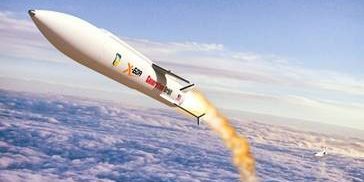an email newsletter released every month highlighting the latest articles, events, technical inquires, and voices from the community
Small Particle Effects on Hypersonic and Subsonic Flight Vehicles

Posted on June 10, 2021 | Completed on May 7, 2021 | By: Taylor H. Knight
What information is available on the effects of certain flight conditions, namely the interactions of small and large particulates in the air, on high-speed (hypersonic/supersonic) vehicles?
The Defense Systems Information Analysis Center (DSIAC) was asked to identify information describing the effects small particles have on hypersonic and supersonic flight vehicles. DSIAC staff compiled research describing the effects of a variety of small particles, including water droplets, ice, rain, dust, sand, and volcanic ash. Volcanic ash effects on subsonic flight vehicles, mainly jets, were explored since the research may apply to hypersonic flight vehicles. Small particles can impact hypersonic flight vehicles by causing erosion hazards to the vehicle’s thermal protection, mechanical failure, and engine failure in subsonic vehicles. Research included using algorithms to simulate flight conditions, shock-tube experiments, modeling collisions between molecules, and exploring the mechanics of fluids.
Want to find out more about this topic?
Request a FREE Technical Inquiry!

